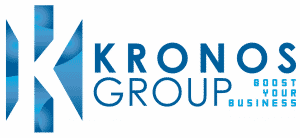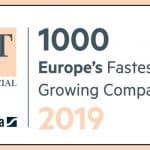How to optimise vendor management in procurement to drive strategic objectives

Summary
Vendor management is vital for longevity and survival in today’s business environment. Vendor management in procurement has several aims and benefits that are reflected in strategic objectives. There is an important link between vendor management and strategic objectives and to derive the ultimate benefits, this must be recognised and aligned with each other. Since vendor management places a particular focus on constant improvement, there are several ways a business can improve vendor management practices.
Vendor management circles around transacting with vendors, and building and maintaining vendor relationships. This is crucial for the long-term survival and existence of businesses.
There is a vast difference between vendor management and procurement. While procurement deals with purchasing and acquiring, vendor management balances it with maintaining vendor relationships whilst connecting the organisation through unified processes.
What does vendor management aim for?
The ultimate goal of vendor management is to create and add value whilst being able to achieve and surpass objectives. With vendor management, a business can fast-track and align goals by maximising creativity, innovation, profitability, and risk mitigation.
Vendor management in procurement facilities:
- Resolving vendor issues and mending relationships
- Optimising costs and mitigating risks in operational processes
- Developing contracts based on terms and conditions
- Selecting vendors against cost, quality, quantity, and delivery time
- Forfeiting from dealing with vendors that are not meeting targets
- Conducting frequent reviews and feedback meetings to track vendor performance
- Monitoring and measuring performance to align objectives
What are the benefits of vendor management in procurement?
Utilising vendor management is likely to reap a variety of benefits for a business in the long run—including smoothened operations, higher satisfaction, and a better financial position.
With vendor management, a firm will see:
- Increased visibility and transparency
- Increased compliance and regulation
- Reduced costs and overheads
- Increased accuracy and efficiency
- Optimisation of monitoring and analysis
- Better foresight for risk mitigation
- Faster onboarding and cycle times
- Strong and clear lines of communication
- Better long-term relationships
- Smarter innovation in processes
- Unique selling point development
How do strategic objectives and vendor management in procurement align?
Strategic objectives reflect the long-run mission, vision, and sustenance of an organisation. Data has shown that 75% of companies have a formal and pre-established system to manage strategic objectives.
With vendor management, a business can align strategic objectives towards objective achievement. Firms generally make four kinds of long-term and strategic decisions, which consist of business growth, customer growth, financial optimisation, and social or environmental-based objectives.
Business growth
Growth objectives build up the top tier for strategic goals placed by an organisation. Vendor management offers integration and connectivity, which increases the quality of processes and spreads to stakeholder relationships. For an organisation to prioritise growth, it is important to achieve balance in costs, concepts, and objectives.
Customer growth
Having a strong base of customers, in the long run, reflects on the survival mechanism for an organisation and sustains the income pathway. With vendor management systems edging up efficiency and accuracy, this reduces inefficiencies and chances of experiencing disruptions.
Financial optimisation
When vendor management is equipped with increasing accuracy, efficiency, transparency, minimised risks and better analytical foresight, an organisation can navigate through decision-making processes that reflect competition levels, economic conditions, and customer needs. This can boost the firm’s financial position.
Social or environmental-based objectives
Vendor management cradles the wider concept of the impact of business on communities and the environment. Data shows that 99% of organisations believe that they must equip sustainability as an objective for future success. Vendor management results in lower wastage, and this can contribute positively towards social-based decisions and overall sustainability goals.
How to improve vendor management practices
Vendor management deals with implementing, and continuously monitoring and analysing robust vendor management practices—which can potentially reduce costs, drive innovation, mitigate risks, and align business objectives.
For the implementation of a successful vendor management strategy, a business must outline its present needs, current bottlenecks, and how the organisation is coping with inefficiencies and downfalls. Once this is outlined, it is best to set up a clear management policy. This pushes vendor management in the direction of strategic objectives and caters to effective process mapping.
Procurement consultants can assist in achieving and aligning your strategic business objectives through vendor management
Procurement consulting can help your firm optimise goals and objectives through vendor management in procurement processes—assisting you in measuring key performance indicators and redefining vendor relationships based on expertise, knowledge, stability, and diligence.




